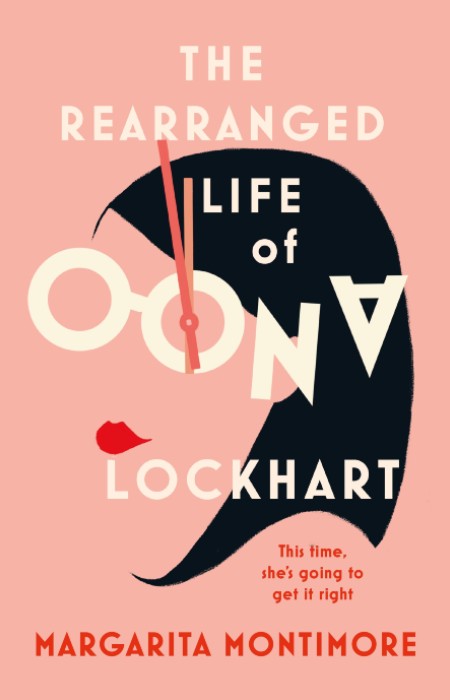
Books with quirky premises are always a challenge to execute successfully.
Either you don’t make the most of the idea underpinning the narrative and the story falls flat, taking the ascendant expectations of your readers along with it; or, you over-egg the concept and the book ends up feel so busy and frenetic with narrative hamster-wheeling that it all becomes too much and people put it down and walk away.
Or if you are as talented as debut author Margarita Montimore, you find an elusively third way, granting your novel with a unique premise a compelling sense of immediacy and emotional truthfulness that ensure a quirky read also becomes a wholly satisfying one.
The Rearranged Life of Oona Lockhart is a triumph, a book that takes an extraordinary piece of inspiration and runs with it, investing a unique idea with emotional resonance to burn and ensuring that far from being a momentarily arresting gimmick, it’s in fact a story that burrows deep into the heart of you and never leaves.
The novel pivots one gloriously clever conceit – that its titular protagonist, Oona Lockhart of New York City finds herself transported on New Year’s Eve right at midnight every year into the body of an older or younger version of herself.
There is no rhyme or reason to it, or so it seems at first, with the first jump, from New Year’s Eve 1982, where she is about celebrate her nineteenth birthday with her beloved Dale and a bunch of friends taking her to 2015 where she is 51, wealthy and nothing like her teenage self envisaged she would be.
“Running a hand across the garments suspended from the long rack, Oona paced the length of the walk-in until her fingers brushed against the jacket Dale had given her. She pulled it off its hanger. The leather was more pliant all these years later, soft and weathered, the black material now shaded with gray. Its rich scent was also faded, though still prevalent, with notes of cedar and cinnamon. Years of wear and exposure had only made it more beautiful. But she was unable to get her arm all the way through the sleeve. Her armor no longer fit her.” (P. 53)
She is disoriented at first, as anyone would be, unable to take in the fact that she is 19 inside but 51 outside, a woman who has ostensibly done a great deal of living in the intervening 33 years but who is for all intents and purposes still a young woman on the cusp of adulthood.
Fortunately she has some help in the form of letters from her previous year’s self, and her mother and assistant Kenzie, both of whom know what is happening to her and do their best to smooth her past without giving away spoilers that might further complicate an already complicated existence.
Even so, and despite her knowledge allowing her to build a considerable fortune and live a comfortable if chronologically messy life, she is understandably resentful at first, unable to believe that a life left in such a higgledy-piggledy, messed-up jigsaw fashion cannot ever have any purpose, meaning or emotional saitsfaction.
But as she moves randomly through the ’80s, ’90s, Noughties and the Twenty-tens, she begins to navigate life with the kind of alacrity that many of us never quite manage when we are traversing life’s course in assuringly linear fashion.
So what begins as an alarming sense of life being robbed of everything good, wonderful and normal becomes an existence that, odd though it may be, begins to make sense, replete with the highs and lows, the joys and sorrows that are common to all of us no matter how our life progresses.

What makes The Rearranged Life of Oona Lockhart such a brilliant, satisfying pleasure to read and immerse yourself in is the deft way that Montimore navigates not simply a trippy premise but the attendant pitfalls that come with it.
How can someone who has no idea which year they will end up in next, who doesn’t know who they will be married to, the kind of friends they’ll have or what she will do with a year in what feels at first like a stranger’s body, live any kind of meaningful life?
Sure she has all that accumulated knowledge that she carries with from year to year and body to body, young or old, but that alone isn’t enough to keep her safe and happy.
She might be able to make millions because she knows what Apple or Google will be worth one day and she is able to relax, in a certain sense, in fate’s hand knowing how many, though not all, things will work out, but given you’re essentially starting all over again on 1 January each year, what kind of life can you possibly have?
A damn good one in fact but one that is as flawed and well-lived as any other, since while Oona might be living life in a strangely one-off kind of way, she is human and prone to the very best and worst of things as any of us.
“How badly Oona wanted to cry and cry and be wrapped in her mother’s comforting arms. Madeleine would’ve surely set aside her own wounded feelings to soothe her daughter; she wouldn’t be smug or petty or say she’d known Edward was rotten all along. Except Madeleine was off with her own rotten Romeo, on a cruise and unreachable. And Oona had less than two hours to confront her husband and write herself a new letter.” (P. 245)
That it, of course, Montimore’s masterstroke with The Rearranged Life of Oona Lockhart.
Her central character is willingly, brilliantly, groundedly human, someone who struggles to make sense of people, places and things, who wants to live her very best life but often fails to do that, and who wants to feel as if her life means something but is never entirely sure it does.
Sound familiar?
You of the desperately linear existence, you who go step-by-step, only ever forward to the next rest stop in your life, are exactly the same as Oona, or more pertinently, she is exactly the same as you.
Her perspective may be unique, and thus so are many of the aspects of her life, but she is as human, fallible and otherwise, as you are, a woman who may live life out of normal order but who still has to live it, enjoy it, make sense of it, and fill it with all the good things she can.
It is that theme of universality, of life and death, of hope and despair, of giddy happiness and grinding sadness, that makes The Rearranged Life of Oona Lockhart such a beguiling, affecting read.
Oona is us and we are her, and though our lives might play out in a different chronological fashion, we are all the same, no life more broken or whole than the rest, investing this brilliantly moving and funny debut with all kinds of fulfilling home truths and the central much-needed reassurance that life is tough for all of us and that we, like Oona, are simply doing their best we can and hoping it all turns out okay, no matter what order it is in.